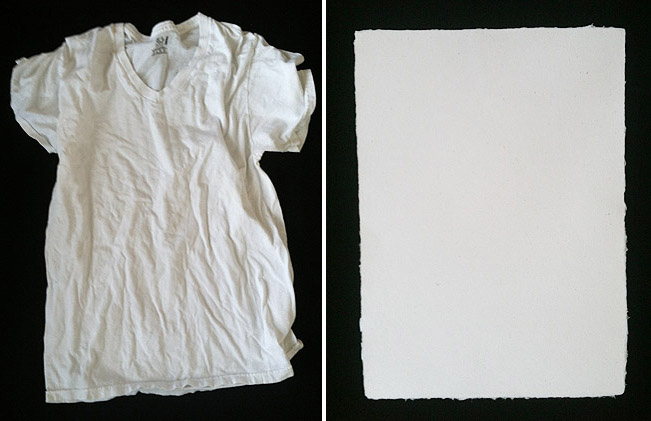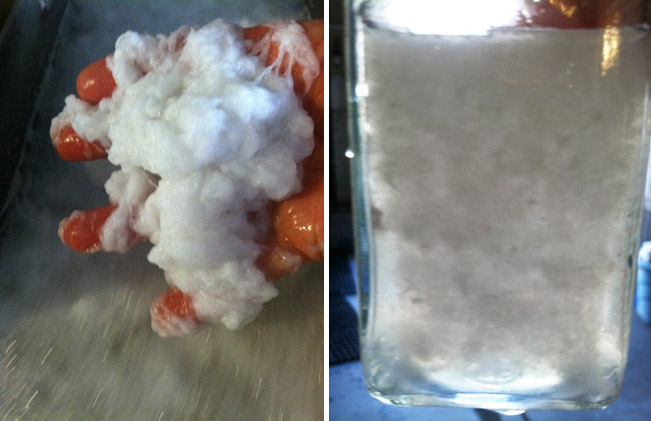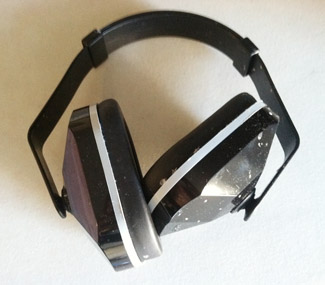OK Go

The next BANDmade Books collaboration is with the band OK Go. We are all really excited to work with such a creative group who is certain to push the paper envelope.
And speaking of paper, we’re making the text pages for their book out of their fan’s clothes and we want yours! If you’d like to contribute here’s what to do:
1) Round up all your old White 100% cotton, hemp or linen: shirts, pants, linens (bedsheets, table cloths, etc.). We are looking for white but we understand that old white isn’t always super white–that’s ok. Don’t worry if your shirt has a colored image on it. As long as the rest of the shirt is white we can accept it.
2) Notice how we didn’t ask for your socks or underwear. That was intentional.
3) Look at all the tags and make sure they are 100% cotton, hemp, or linen (or a blend of these fibers). We cannot accept any fibers other than cotton, hemp, or linen so if there’s no tag please don’t send it to us. 5% lycra is not acceptable. It’s all or nothing with rag paper.
4) Box up what you have and mail it to:
BANDmade Books
1090 Eddy Street #104
San Francisco, CA 94109
5) Check back here to see what happens with your clothes!
Posted by BANDmade Books on September 1st, 2011facebook
back to top

Step 1: making the pulp

Thanks to everyone who sent in their old clothing!
The first step is to remove all buttons, zippers, fasteners, and tags. The tags are not cotton and the other items will damage the beater.
Next, the clothing is cut into small pieces and soaked in water.

2 lb. Hollander Beater
The cut rag is placed into a machine called a hollander beater and filled with water. This beater can process up to 2 lbs of cut rag at a time.

Ever wonder if you put enough soap in your laundry?
Let’s take a look under the hood:

The roll (left) has a series of metal fly bars. Underneath the roll is a bed plate which has another set of metal bars. Turning the hand crank (right) lowers the roll and shortens the distance between the fly bars and the bed plate. As the fiber passes through this area it is beaten into pulp.

In about 15 minutes or so the fiber no longer resembles cloth. The final test is to put a bit of the pulp in a jar and add some water. Shaking the jar and holding it up to the light shows if there are any clumps or long fibers.
| It takes about 30-45 minutes to process a load of clothing into pulp. It’s pretty loud so we need to wear these earphones to protect our ears.We’re getting approximately 25 sheets/lb and each t-shirt weighs about 3/4 lb. We need at least 3200 sheets for the edition. That’s a lot of pulp! |
 |
|
|
It’s not too late to send in your clothing! If you’d like to have us add your whites to the mix please follow these instructions.
Posted by BANDmade Books on January 9th, 2012facebook
back to top
Step 2: making the sheets

A mould (screened piece) and deckle (frame) is used to form the sheets.
Papermaking is a very wet process so we wear plastic aprons and rubber boots.

The vat is filled with pulp and water and mixed by hand. This is called hogging the vat.
The mould and deckle is dipped into the vat at an angle and pulled straight up.

Giving the mould a couple front-back/side-side shakes evenly settles the fibers as the water drains.

Sheets waiting to be couched.
Couching (pronounced cooching) is the process of transferring the sheet off the mould.

Left: the deckle is removed and the mould is lined up so the new sheet will lie directly on top of the one below, separated by a piece of interfacing.
Right: even pressure is put on the mould to get the sheet to release.

The mould is peeled back leaving the newly formed sheet behind. A piece of interfacing is placed on top of the sheet and the process is repeated.
Traditionally, felt is used but we wanted a smooth paper so we used interfacing.

The stack of formed sheets (called a post) is put in a hydraulic press to remove the excess water.
Pressed sheets are carefully placed into a drying box which consists of a layers separated by a channeling system where the air can pass through (bottom right). The two sides are sealed and a fan is set to pull air from the open side. The top is held down with ratchet straps so the paper can dry under pressure, creating perfectly flat sheets.
It takes about 8-10 hours for the paper to completely dry.
 |
The dry sheets are checked for consistency and then placed under tension to cure. Paper should cure for at least a year if it’s to be used for text pages. We put the paper in small stacks of 100 with a board in-between every 500 sheets to help distribute the pressure.We made over 4000 sheets for the text pages.
It took a long time. |
|
|
Posted by BANDmade Books on May 24th, 2012facebook
back to top
















